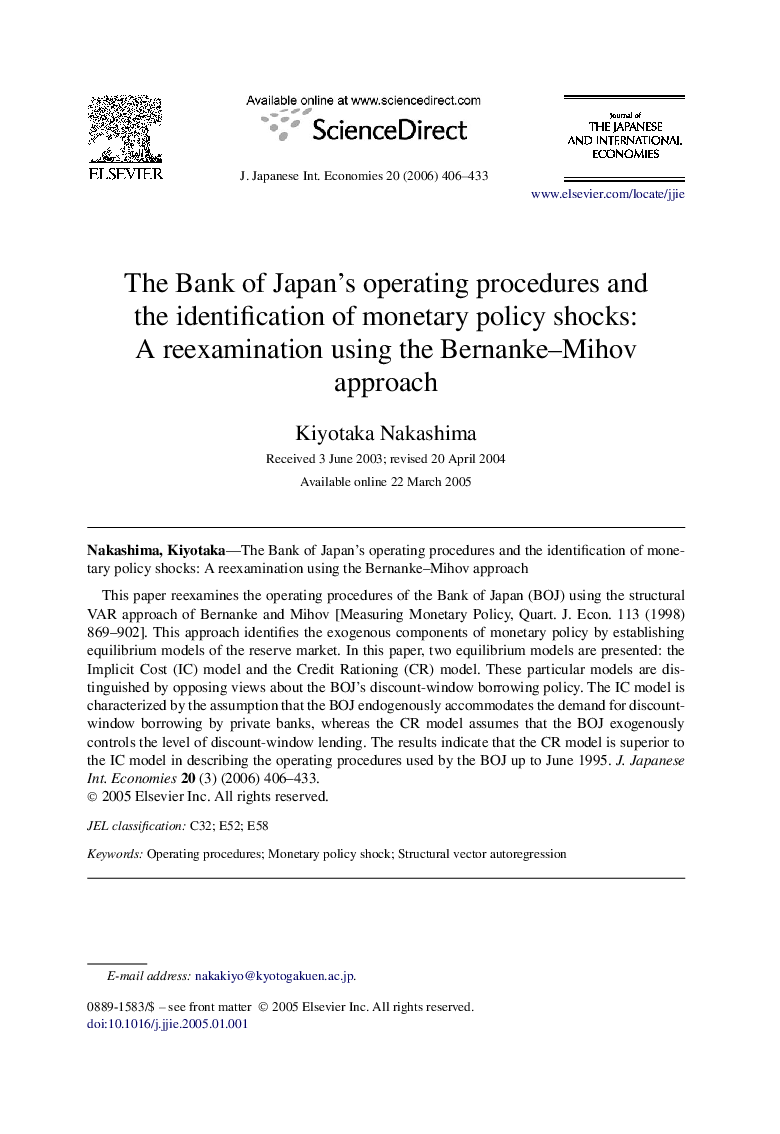| Article ID | Journal | Published Year | Pages | File Type |
|---|---|---|---|---|
| 965613 | Journal of the Japanese and International Economies | 2006 | 28 Pages |
Abstract
This paper reexamines the operating procedures of the Bank of Japan (BOJ) using the structural VAR approach of Bernanke and Mihov [Measuring Monetary Policy, Quart. J. Econ. 113 (1998) 869-902]. This approach identifies the exogenous components of monetary policy by establishing equilibrium models of the reserve market. In this paper, two equilibrium models are presented: the Implicit Cost (IC) model and the Credit Rationing (CR) model. These particular models are distinguished by opposing views about the BOJ's discount-window borrowing policy. The IC model is characterized by the assumption that the BOJ endogenously accommodates the demand for discount-window borrowing by private banks, whereas the CR model assumes that the BOJ exogenously controls the level of discount-window lending. The results indicate that the CR model is superior to the IC model in describing the operating procedures used by the BOJ up to June 1995. J. Japanese Int. Economies 20 (3) (2006) 406-433.
Related Topics
Social Sciences and Humanities
Economics, Econometrics and Finance
Economics and Econometrics
Authors
Kiyotaka Nakashima,
